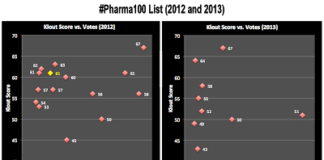 The folks at MBS/Vox, part of CommonHealth, “a research-based consultancy specializing in the physician-patient dialogue,” are at it again with their “candid camera” doctor’s office research.
The folks at MBS/Vox, part of CommonHealth, “a research-based consultancy specializing in the physician-patient dialogue,” are at it again with their “candid camera” doctor’s office research.
You may remember CommonHealth’s claim that drug advertisers don’t know how DTC works. They based that conclusion on video recordings of physician-patient communications during office visits. CommonHealth claimed that very few patients asked for a brand name that they saw in a recent DTC ad. Therefore, DTC does not work by causing patients to ask for brand name drugs. Ergo, DTC works, but we don’t know why. I totally destroyed the validity of the conclusions of that research in a previous post to this blog (see “Advertisers Don’t Know How DTC Works. Say wha?“).
I received an email today from my friends over at PharmaVoice inviting me to download a free “Thought Leader” article entitled “Everyone Wins When Clients Can Help Physicians and Patients Speak the Same Language“.
The article described some new research by CommonHealth and it specifically described the “Candid Camera” approach used: “Video cameras catch every sound and movement, so words and visual cues can be analyzed simultaneously. Targeting practices based on clients’ needs focus the research on key conversations that are meaningful to specific brands within an evolving marketplace.”
First, I assume that the research is done with the full knowledge and approval by both physicians and patients and that it was compliant with relevant HIPAA privacy regulations and state laws.
Second, I assume the physicians involved get paid for allowing CommonHealth to install the “candid cameras” and interview them and their patients afterward.
Although the research is billed as a way that pharmaceutical companies can help improve physician-patient communications by helping physicians and patients “speak the same language,” it obviously may be a more useful to CommonHealth’s pharma clients, who can “demonstrate value to physicians beyond just the benefit of the brand, potentially creating an unexpected, yet mutually beneficial relationship.” Ie, sell more drugs.
So, is this research or a sales tactic?
The author categorizes this research as belonging ton the field of “sociolinguistics.” I’ve previously suggested this kind of research is bogus (see here). Therefore, I would call it “bogolinguistic research.” As such, does it comply with PhRMA’s new guidelines and “reinforce [the pharmaceutical industry’s] intention that [their] interactions with healthcare professionals are professional exchanges designed to benefit patients and to enhance the practice of medicine”? You tell me!









![6 Digital Tools at the Center of Healthcare Digitalization [INFOGRAPHIC]](http://ec2-54-175-84-28.compute-1.amazonaws.com/pharma-mkting.com/wp-content/uploads/2021/04/6DigitalTools_600px-100x70.jpg)




